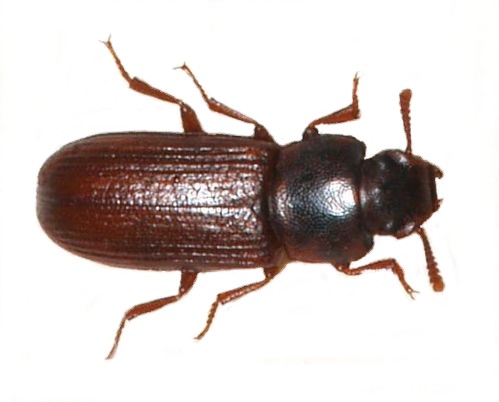Saw-Tooth Grain Beetle

The adult is a small, active, brown beetle, 1/10 to 1/8 inch long, with a flattened body and six saw-toothed projections on each side of the thorax. The abdomen tapers toward the tip. Its body is well adapted for the cracks and crevices where it is often found. The larva is yellowish-white with a brown head and, when fully grown, is usually less than 1/8 inch long. The saw-toothed grain beetle is a common pest known throughout most of the world and is a common pest in grocery stores, food warehouses, grain storage and homes. A closely related species, Oryzaephilus mercator, is also important and is often mistaken for the saw-toothed grain beetle, but control methods of the two beetles would be basically the same. One method of distinction between the similar beetles: the Sawtoothed beetle cannot fly. The females live from 6 to 10 months and deposit 45 to 285 eggs in foodstuffs. Several generations may occur each year, as the life cycle requires only 3 to 4 weeks during the summer.
The Sawtoothed grain beetle readily penetrates packaged cereals, dried fruits, and candies. It also attacks flour, meal, sugar, drugs, dried meat, and tobacco. Remember this varied diet when locating the source of an infestation; controlling this stored product pest requires a careful inspection, discarding any infested material, repackaging products in clean containers, and a thorough vacuuming of pantries, cupboards and cabinets.

